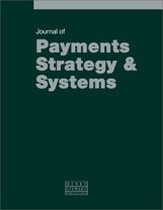Retail payments innovations in Peru: Modelo Peru and financial inclusion
Abstract
The retail payments landscape in Peru has changed significantly in 2016 due to the implementation of an electronic money scheme called Modelo Peru (Billetera Móvil — or BIM) and the introduction of a fast retail payment-like service. The development of these recent improvements has only been possible as a result of the innovations carried out over the past 15 years in the relevant foundational aspects of Peru’s retail payments systems. However, despite the gains achieved in terms of efficiency and safety, access to and the use of digital payments have been low, as is generally the case with most financial services in Peru. Because of this, payment innovations have also had to be geared towards financial inclusion (Modelo Peru). In addition, Peru has implemented a National Strategy on Financial Inclusion (NSFI) that coordinates public and private sector efforts based on a common agenda, the creation of an adecuate ecosystem for digital payments being one of its main components. This paper describes the Peruvian retail payments market and its recent innovations, and outlines the activities developed within the framework of the NSFI for payment digitisation.
The full article is available to subscribers to the journal.
Author's Biography
Milton Vega Bernal is Deputy Manager of Payment Systems at the Central Bank of Peru, where he is responsible for the regulation and supervision of payment systems, the settlement of monetary operations and the administration of the real-time gross settlement system. Mr Vega is a member of the Inter-institutional Committee on Financial Inclusion in Peru, and also chairs the Working Group on Digital Payments. Mr Vega studied economics at the University of Lima and holds master’s degrees in economics (London School of Economics and Political Science) and public administration (Harvard University).
